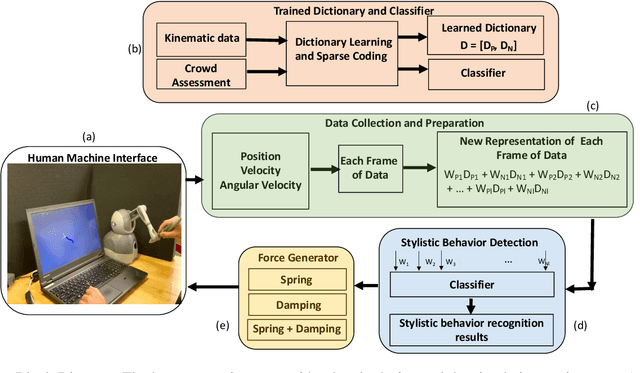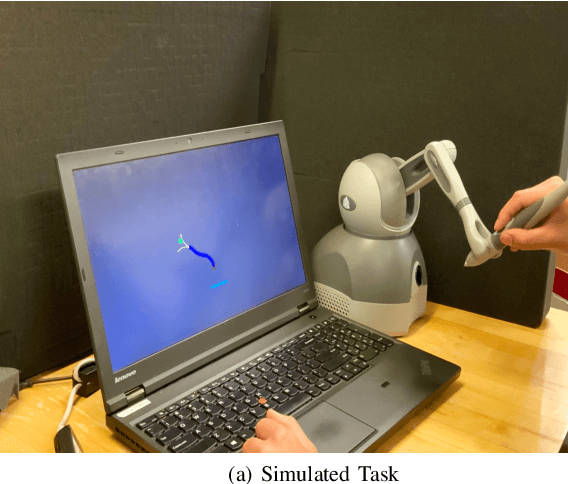Robert Rege
Adaptive Surgical Robotic Training Using Real-Time Stylistic Behavior Feedback Through Haptic Cues
Dec 31, 2020



Abstract:Surgical skill directly affects surgical procedure outcomes; thus, effective training is needed to ensure satisfactory results. Many objective assessment metrics have been developed and some are widely used in surgical training simulators. These objective metrics provide the trainee with descriptive feedback about their performance however, often lack feedback on how to proceed to improve performance. The most effective training method is one that is intuitive, easy to understand, personalized to the user and provided in a timely manner. We propose a framework to enable user-adaptive training using near-real-time detection of performance, based on intuitive styles of surgical movements (e.g., fluidity, smoothness, crispness, etc.), and propose a haptic feedback framework to assist with correcting styles of movement. We evaluate the ability of three types of force feedback (spring, damping, and spring plus damping feedback), computed based on prior user positions, to improve different stylistic behaviors of the user during kinematically constrained reaching movement tasks. The results indicate that four out of the six styles studied here were statistically significantly improved (p<0.05) using spring guidance force feedback and a significant reduction in task time was also found using spring feedback. The path straightness and targeting error in the task were other task performance metrics studied which were improved significantly using the spring-damping feedback. This study presents a groundwork for adaptive training in robotic surgery based on near-real-time human-centric models of surgical behavior.
 Add to Chrome
Add to Chrome Add to Firefox
Add to Firefox Add to Edge
Add to Edge